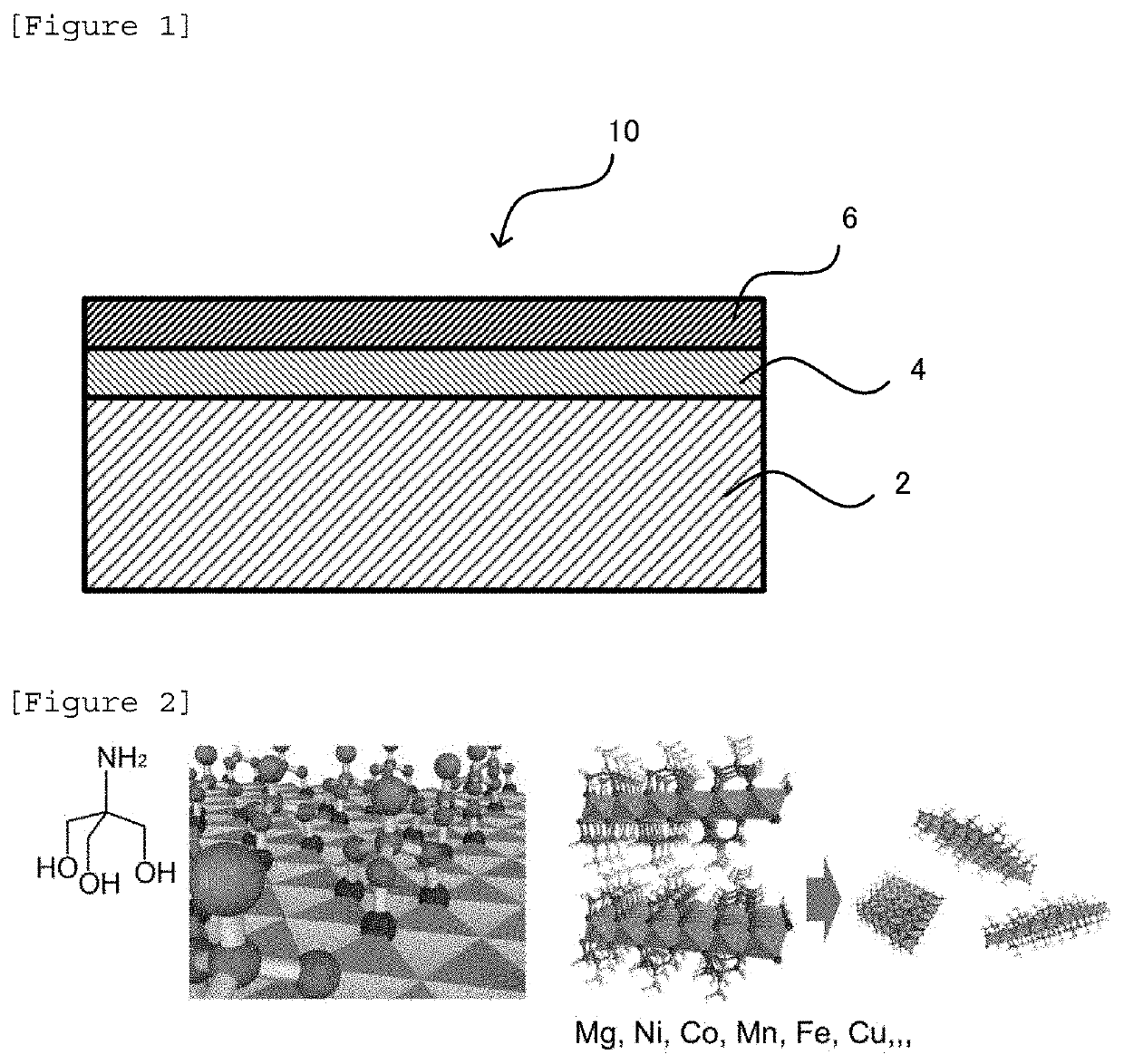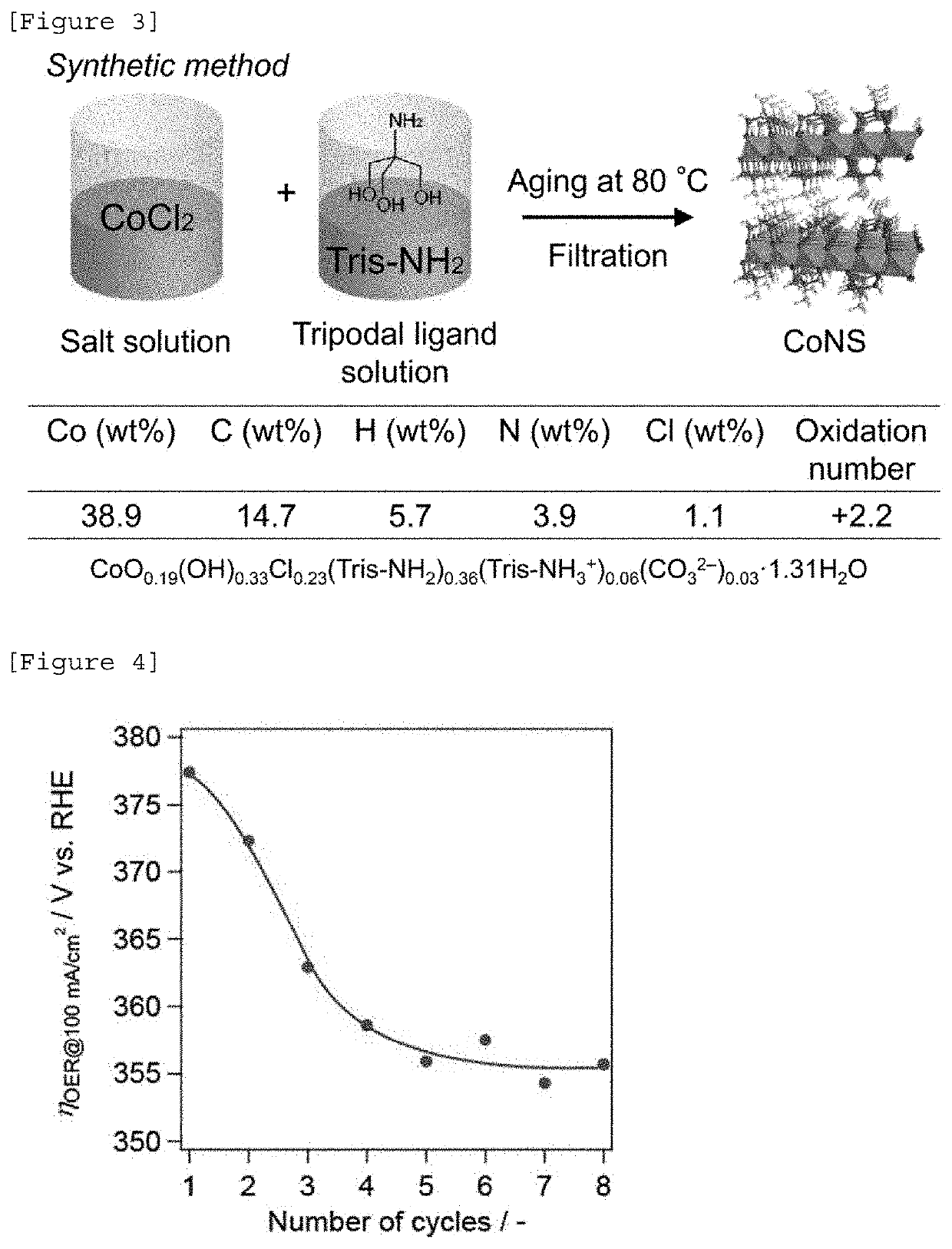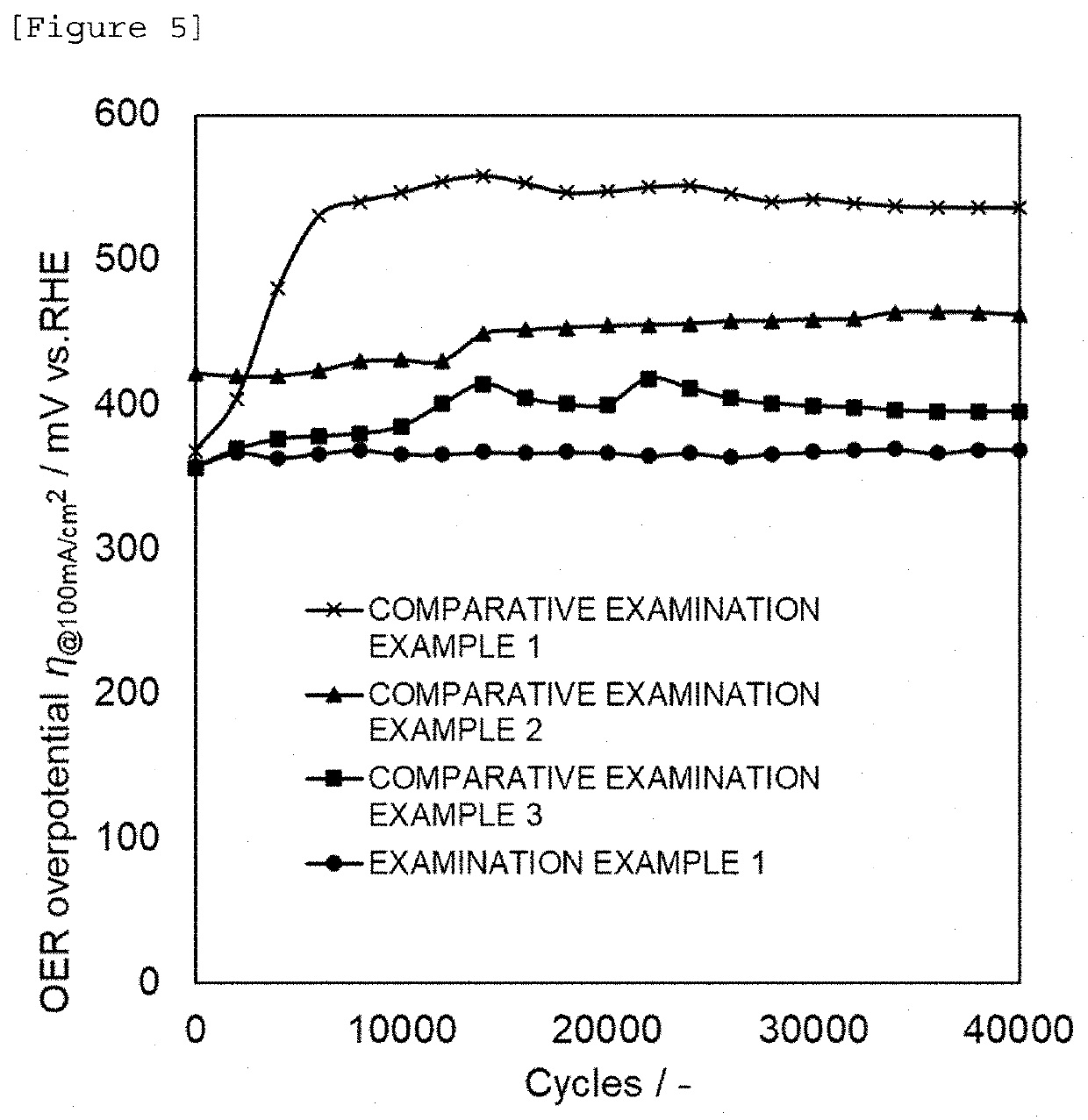Alkaline water electrolysis method and alkaline water electrolysis anode
an electrolysis anode and alkaline water technology, applied in the direction of electrophoretic coatings, energy input, coatings, etc., can solve the problems of high corrosiveness, excessive labor in operation management, and deterioration in performance of nickel-based anodes, etc., to achieve excellent catalytic activity, stable retention of catalytic activity, and electrolysis performance.
- Summary
- Abstract
- Description
- Claims
- Application Information
AI Technical Summary
Benefits of technology
Problems solved by technology
Method used
Image
Examples
example 2
Examination Example 2
[0070]An anode was prepared by performing electrolysis in the same manner as in Examination Example 1 using an electrolytic solution in which the Co-NS dispersion liquid was dissolved. In the present example, electrolysis with cyclic voltammetry (−0.7 to 0.5 V vs. RHE, 500 mVs−1, 2000 cycles) was repeated 21 times to load voltage fluctuation up to 40000 times.
[0071]FIG. 6 shows changes in hydrogen generation and oxygen generation overpotentials at |i|=100 mA / cm2 versus the number of potential cycles. In the anode of Examination Example 2, the increase in the overpotential was able to be suppressed and the enhancement in the durability by the Co-NS was ascertained. On the other hand, as shown in FIG. 6, from the results of Examination Example 2 and Comparative Examination Example 4 which will be mentioned later, it was found that in the cathode, the overpotential was 0.40 to 0.45 V irrespective of whether the Co-NS was present or not, and the Co-NS dispersed in t...
example 3
Examination Example 3
[0073]Evaluation was performed by conducting an electrolysis test under the same condition as in Examination Example 2 dissolving the Co-NS dispersion liquid in the electrolytic solution in the same manner as in Examination Example 1 and using a platinum plate (Bare-Pt). FIG. 7 shows a change in hydrogen generation overpotential at |i|=100 mA / cm2 versus the number of potential cycles. As shown in FIG. 7, the overpotential lowered gradually from 0.46 V to 0.37 V.
example 4
Examination Example 4
[0075]Evaluation was performed by conducting a test under the same condition as in Examination Example 2 dissolving the Co-NS dispersion liquid in the electrolytic solution and using a Ni cathode. FIG. 7 shows a change in hydrogen generation overpotential at |i|=100 mA / cm2 versus the number of potential cycles. As shown in FIG. 7, the overpotential was stabilized at about 0.43 V.
PUM
| Property | Measurement | Unit |
|---|---|---|
| size | aaaaa | aaaaa |
| concentration | aaaaa | aaaaa |
| thickness | aaaaa | aaaaa |
Abstract
Description
Claims
Application Information
 Login to View More
Login to View More - R&D
- Intellectual Property
- Life Sciences
- Materials
- Tech Scout
- Unparalleled Data Quality
- Higher Quality Content
- 60% Fewer Hallucinations
Browse by: Latest US Patents, China's latest patents, Technical Efficacy Thesaurus, Application Domain, Technology Topic, Popular Technical Reports.
© 2025 PatSnap. All rights reserved.Legal|Privacy policy|Modern Slavery Act Transparency Statement|Sitemap|About US| Contact US: help@patsnap.com



